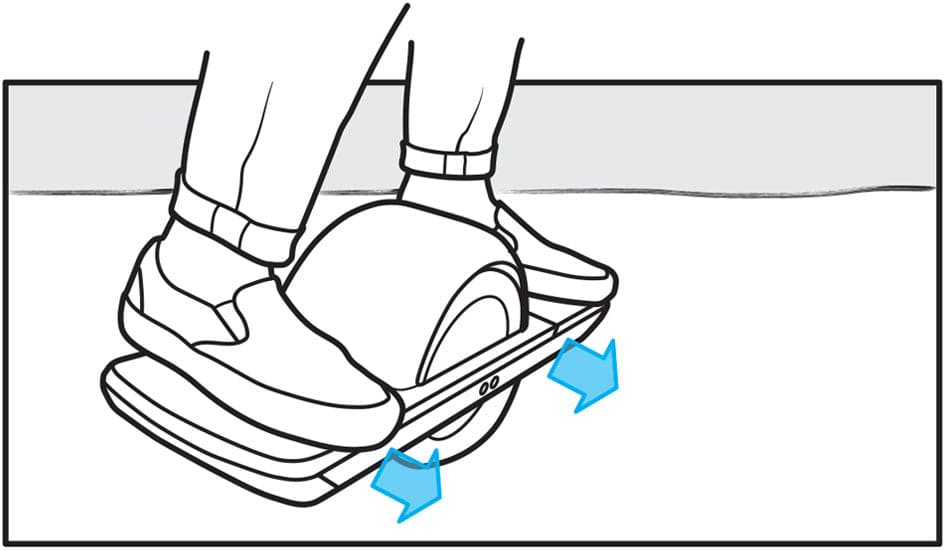-
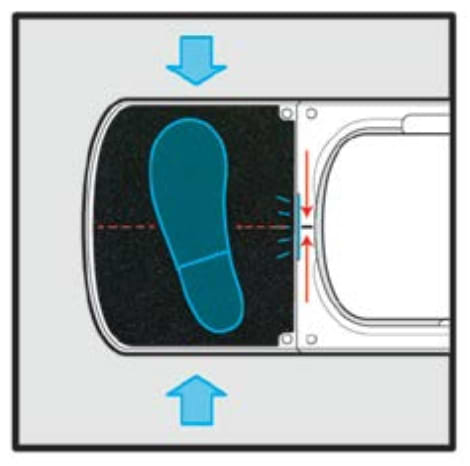
Switch on Onewheel GT using the power switch on the side.
Step firmly on both sides of the front footpad.
-
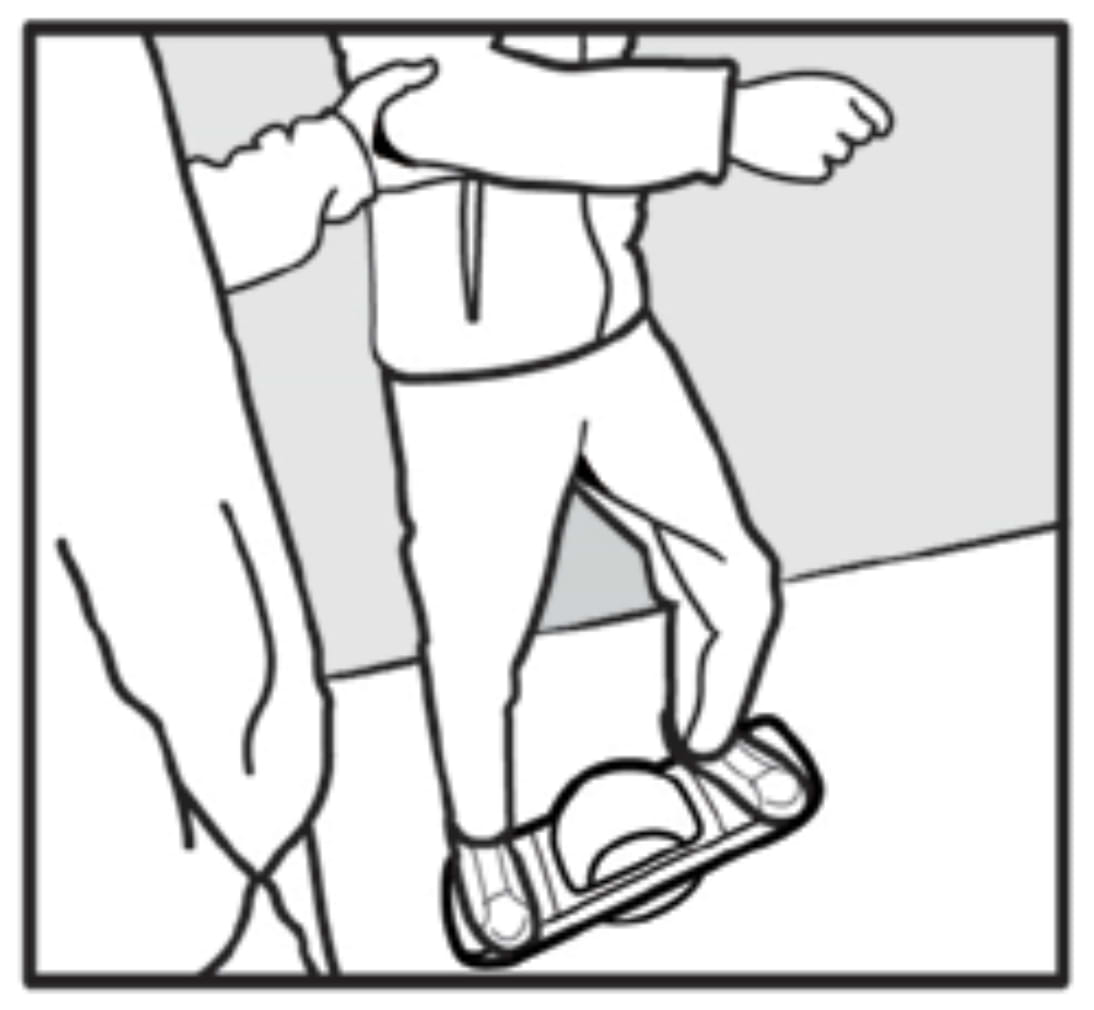
Always wear a helmet and other protective gear.
Lean on a friend to get started.
Slowly come up to balance.
GT will engage when you reach a horizontal orientation.
-
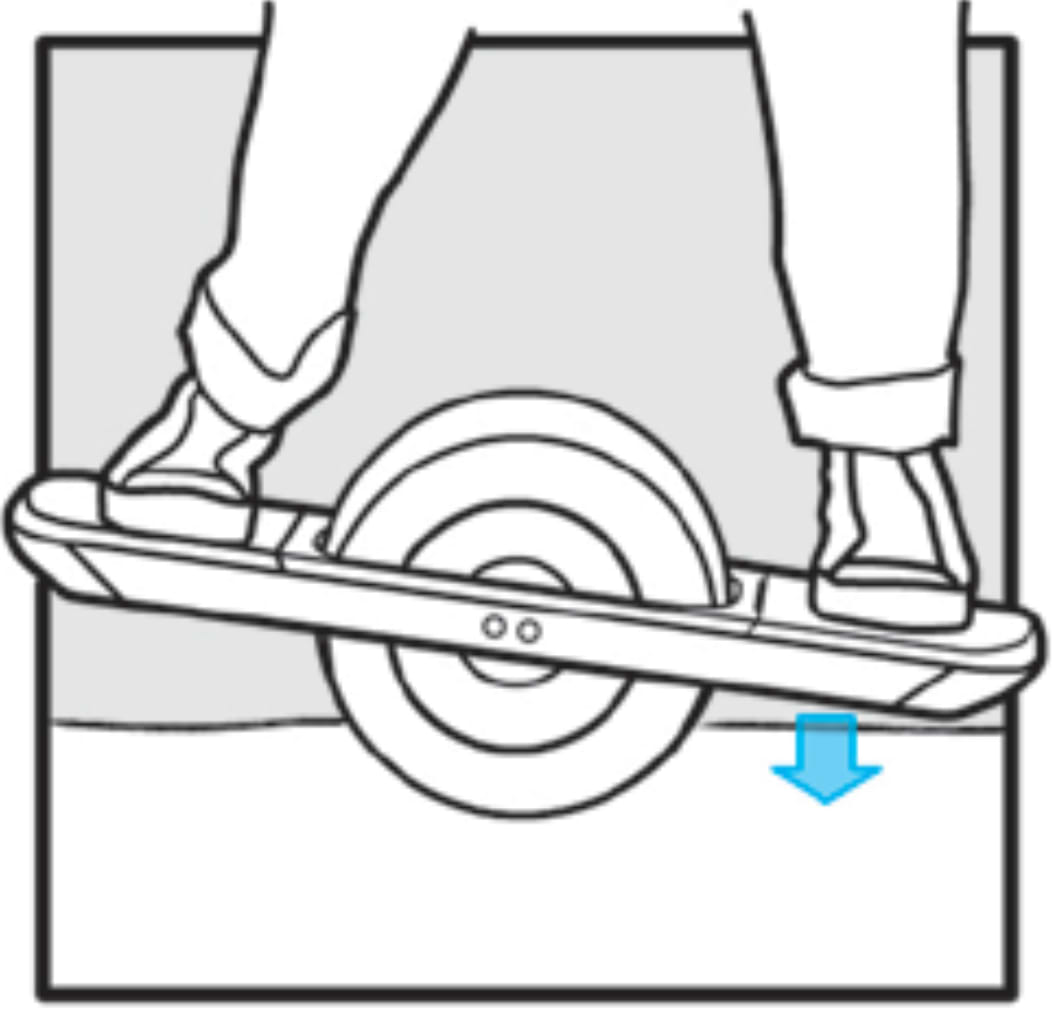
Lean forward to accelerate.
Lean back to slow down.
Lean side to side to turn.
-
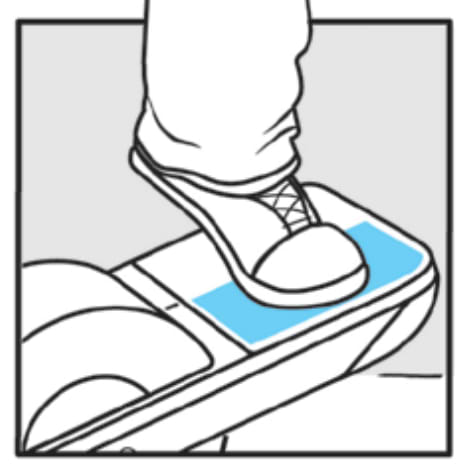
Dismount
Slow down to < 1 mph and with your toe planted lift your heel from one side of the rider detection area.
If you are new to riding, enable SimplestopTM in the Onewheel App. SimplestopTM is the easiest way to dismount. See in the owner's manual pages 30-33 for more info on dismounts.
Basic Balance
Remember, Onewheel GT is self-balancing so there’s no need to muscle your way onto the board. Instead, use slow, small movements.
When Onewheel GT is on the ground, you’ll notice a lower side and a higher side. Always step onto the lower side first. Then place your other foot onto the rider-detection area. Keep your legs straight (like you are standing on the ground) with a very slight bend in your knees.
Stand up slowly, bring the board to parallel, and the Onewheel GT will engage.
TIP: Have a friend’s shoulders handy to help you the first few times you get on your Onewheel GT. After practicing a few times, we promise you’ll be a pro.
TIP: Look where you want to go (don’t look down).
TIP: Use light, constant pressure to control your Onewheel.
TIP: Don’t bend your knees too much; stand tall on your first rides.

Regenerative Braking
Decelerating while going downhill recharges the Onewheel GT battery.
WARNING Riding hills exceeding a 15% grade is extremely dangerous and may result in loss of control or damage to your Onewheel GT.
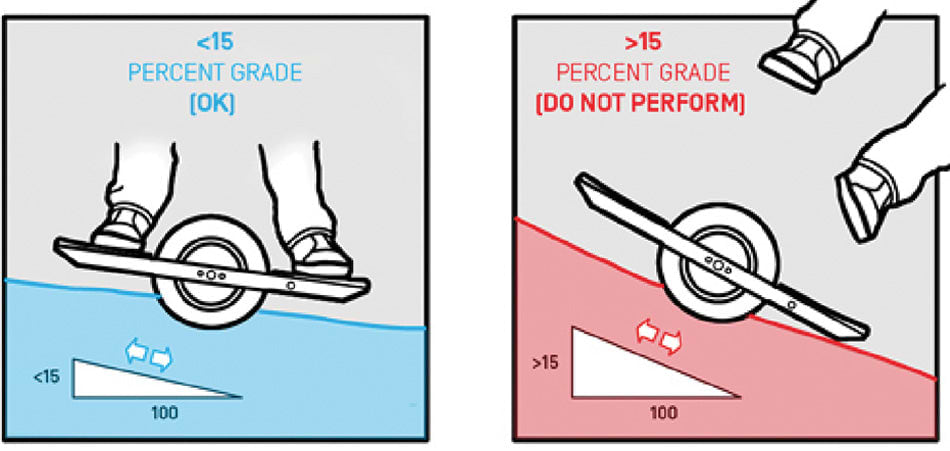
Understanding The Footpad
The front footpad is pressure sensitive and divided into two zones, one on each side of the footpad. Both zones must be pressed to begin riding. The Lightbar turns blue as visual indication of the sensor pad areas you are engaging.
TIP: Avoid repositioning your foot while riding.
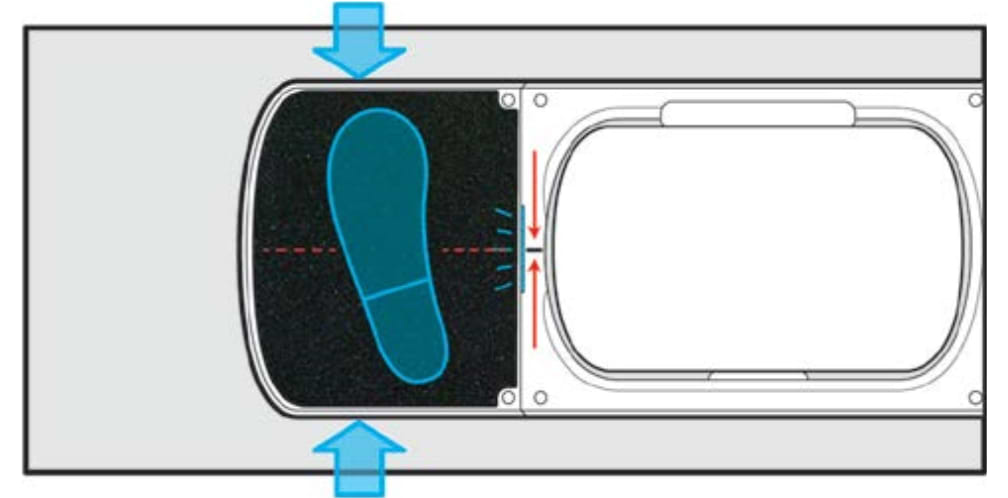
Direction and Speed
Lean forward to move forward, and lean back to slow down or to move backwards. The more you lean, the faster you’ll go. Always accelerate slowly and under control.
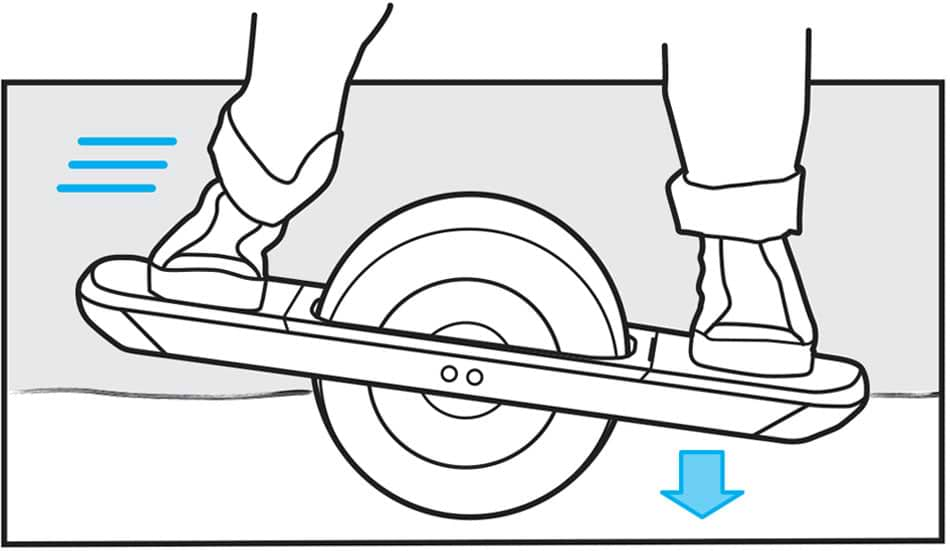
Turning
Use subtle heel-toe pressure for turning left or right. You will begin to turn in the direction you lean. The more you lean, the sharper the turn.
